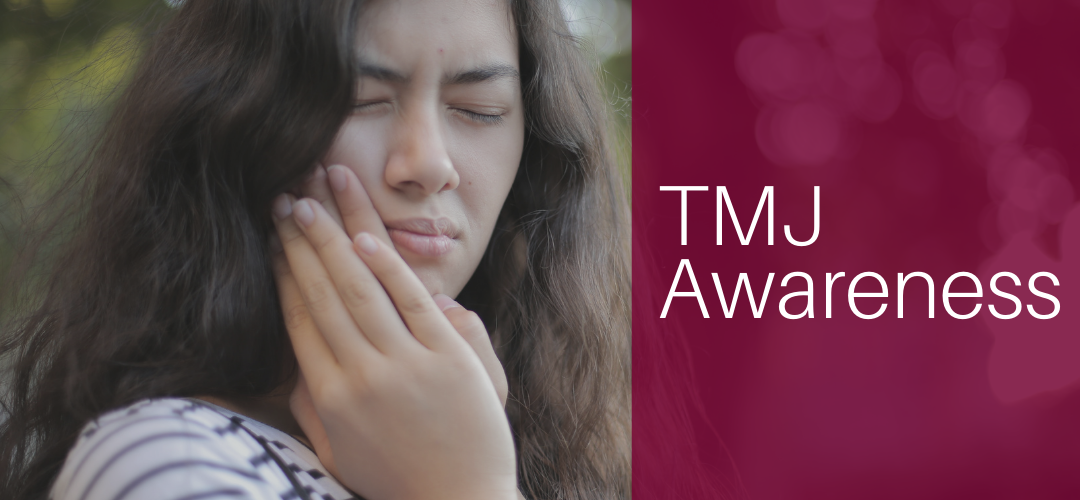Temporomandibular joint (TMJ) Awareness Month takes place every November with the purpose of educating the public about the realities of TMJ disorders. According to the National Institute of Dental and Craniofacial Research, estimates suggest that TMJ disorders affect over 10 million Americans.
What is TMJ?
TMJ is a hinge that connects the jaw to the temporal bone of the skull. There is one joint on each side of the jaw. This joint works together with supporting jaw muscles and ligaments to help an individual talk, chew, and yawn by moving the jaw up and down, and side to side.
Because this joint is so small and delicate, it’s prone to becoming damaged, inflamed or irritated. When this occurs, an individual might experience issues with chewing, speaking or opening their mouth, and suffer from severe pain and discomfort.
What is TMD?
Temporomandibular disorders (TMD) is the term used to refer to the various disorders that can affect the temporomandibular joint.
What causes TMD?
The TMJ combines a hinge action with gliding motions. The parts that interact in the joint are shielded with cartilage and are separated by a small shock-absorbing disk which keeps the movement smooth. Although the exact cause of the condition is not clear, there are several factors that may increase the risk of developing TMD.
Causes and possible risk factors include:
- Deterioration of the disk through various types of autoimmune diseases
- Jaw injury or dislocation due to trauma from an accident
- Overuse through excessive gum chewing or teeth grinding and/or clenching
- Tooth or jaw alignment
- Infection or inflammation in the chewing muscles
What are the Symptoms of TMD?
An individual with TMD often experiences severe pain and discomfort. It can be temporary or last several years and might affect one of both sides of the face. TMJ disorders are known to affect more women than men and are most commonly found in those between the ages of 20 and 40.
Common symptoms include:
- Pain or tenderness in the TMJ or jaw muscles
- Locking of TMJ – making it difficult to open or close the mouth
- Clicking sound or grating sensation when opening the mouth or chewing
- Tension in the face, neck and shoulders
- A change in teeth alignment
Treatment Options for TMD
Most TMJ disorders are self-limiting, therefore a conservative approach is best. This approach includes eating soft foods, avoiding repetitive function (gum chewing, biting nails, ice chewing), modifying pain with heat packs, and practicing relaxation techniques to minimize tension. A dentist may recommend exercises to strengthen the jaw muscles, medications, or a night guard or bite plate to decrease grinding or clenching.
Care at Roseman Dental
Patients experiencing symptoms associated with a TMJ disorder, needing help to treat pain, jaw dysfunction, or restoration of bite can visit Roseman Dental. To find out how to become a patient of Roseman Dental at Roseman University College of Dental Medicine, or to schedule an appointment, please contact us at the location closest to you. Roseman Dental is here to help in eliminating the pain and discomfort associated with TMJ disorders.
Roseman Dental & Orthodontic Clinic – Henderson, NV: 702-968-5222 or visit www.rosemandental.com/become-a-patient-nv.
Roseman Dental – South Jordan, UT: 801-878-1200 or visit www.rosemandental.com/become-a-patient.
For more information on TMJ disorders visit the Nation Institute of Dental and Craniofacial Research at www.nidcr.nih.gov.
Article by Kristine Campo



